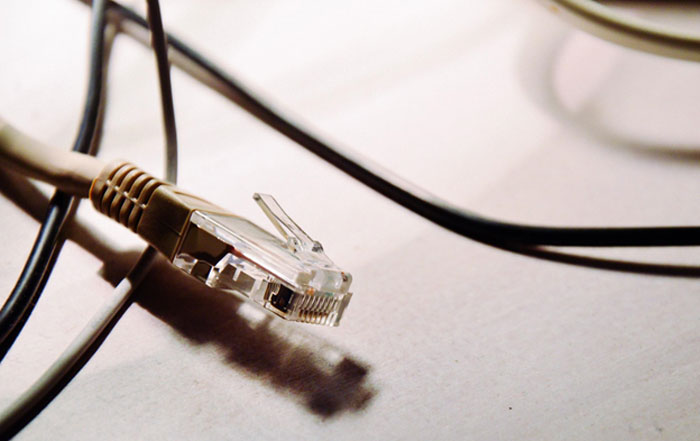What’s a crossover cable? As the world gets more wired and more networked, we find ourselves learning all sorts of terminology we didn’t even dream of in the past. People who grew up before telephone lines were ubiquitous are now grasping the nuances of Facebook. Folks who had to pass around tape recordings of TV shows can now look up their favorite episodes on the internet. The communication and data infrastructure of the world has changed.

Source: https://stocksnap.io/photo/B4I4XD7WY4
With those changes have come new hardware, new tools, new terms. One of those is the crossover cable. What does this mean in layman’s terms? How and where are these used, and why? What makes these different from all the other cables that we might use in our everyday lives?
The Basics
First, let’s look at what crossover cables are, so we can all be on the same page. An Ethernet crossover cable is a type of OTS patch cable that is meant for one purpose. It connects two devices to each other, usually as a means to support temporary host-to-host networks. They fill in for a network device like a router if these aren’t present.
The typical patch cable is designed for multiple devices. For instance, you can link together a computer and a network switch. Crossover cables are the opposite, usable only for the same type of device. They might, for instance, connect a terminal to another terminal or two phones.
Crossover cables are meant to connect two devices of the same category, rather than the model. This means that if you buy a cable to connect two desktops together, you should have no trouble linking a desktop and a laptop together using the same cable. However, you can’t use that same cable to link a desktop to a printer. At that point, what you want is a patch cable.
Physical Distinctions
In general, crossover cables don’t look that different from other patch cables. Physically speaking, they aren’t distinctive and even their connectors look the same. The difference lies in the internal workings and wiring structures.
Internal wiring differences actually have a reversal of how transmission and receiving of signals occurs. Crossover cables have color-coded wiring running through the connectors. The first and third wires (from left to right) are crossed, along with the second and sixth. This is in contrast to the identical sequences you’ll see on standard cabling.
Ethernet crossover cables use special markings to distinguish themselves from other types. If you were looking for physical differences, then there isn’t anything particularly dramatic. What you will find is a red coloring, which isn’t often used in other cables. Some also have “crossover” stamped on the packaging and wire casing.
Common Uses
In the 90s and early 2000s, crossover cables saw a lot of use. The most common forms of ethernet networking didn’t support direct cable connections between hosts. This necessitated a “middle man” that the crossover cable fulfilled. During this period, separate wires were used to receive and transmit, requiring two endpoints to communicate through an intermediary. This was meant to avoid conflict.
In the modern age, this is no longer the case. New wires and technologies have allowed for a single cable to act as transmission and receiver. In addition, a new standard was adopted that helped do away with the need for two separate wires. This removes the need for crossover cables on most network systems.
Connecting Older Hardware
That does not mean crossover cables are useless now, however. They still see use when connecting hardware that isn’t configured for modern Ethernet setups. These are rare instances, but not impossible depending on the industry or field an office works in. Modern devices are built to detect crossover cables and work with them without issue.
Direct Connections
If you still use crossover cables, you’re doing it for direct network connections. Attempting to hook up older routers or switches using a crossover cable can prevent connections from forming. In general, however, unless you’re doing a partial upgrade or an aspect of your operations is reliant on old and irreplaceable hardware, you shouldn’t need these anymore.
Short-Range Networks
As noted, they’re meant to connect two devices of the same category together. This means that if you need to create a short-range, very limited network, the cable is still a viable choice. This is especially true if the devices don’t have Bluetooth connectivity, the other common choice for this purpose.
Converting Cables
Sometimes, you might feel a need a straight-through cable to a crossover one. This can be done by removing the connector and reattaching the wires within. Make sure that you cross the appropriate transmit and receive wires. This should turn it into a crossover cable with little issue.
Conclusion
Modern ethernet infrastructure no longer uses crossover cables in general. There are still some rare instances when this is the case, but they no longer represent the standard. However, modern tech is still compatible with them, so they’re not useless if you still have them around. At least you know now not to get them when you plan a network upgrade.


Comment Policy
Your words are your own, so be nice and helpful if you can. Please, only use your REAL NAME, not your business name or keywords. Using business name or keywords instead of your real name will lead to the comment being deleted. Anonymous commenting is not allowed either. Limit the amount of links submitted in your comment. We accept clean XHTML in comments, but don't overdo it please. You can wrap code in [lang-name][/lang-name] tags.